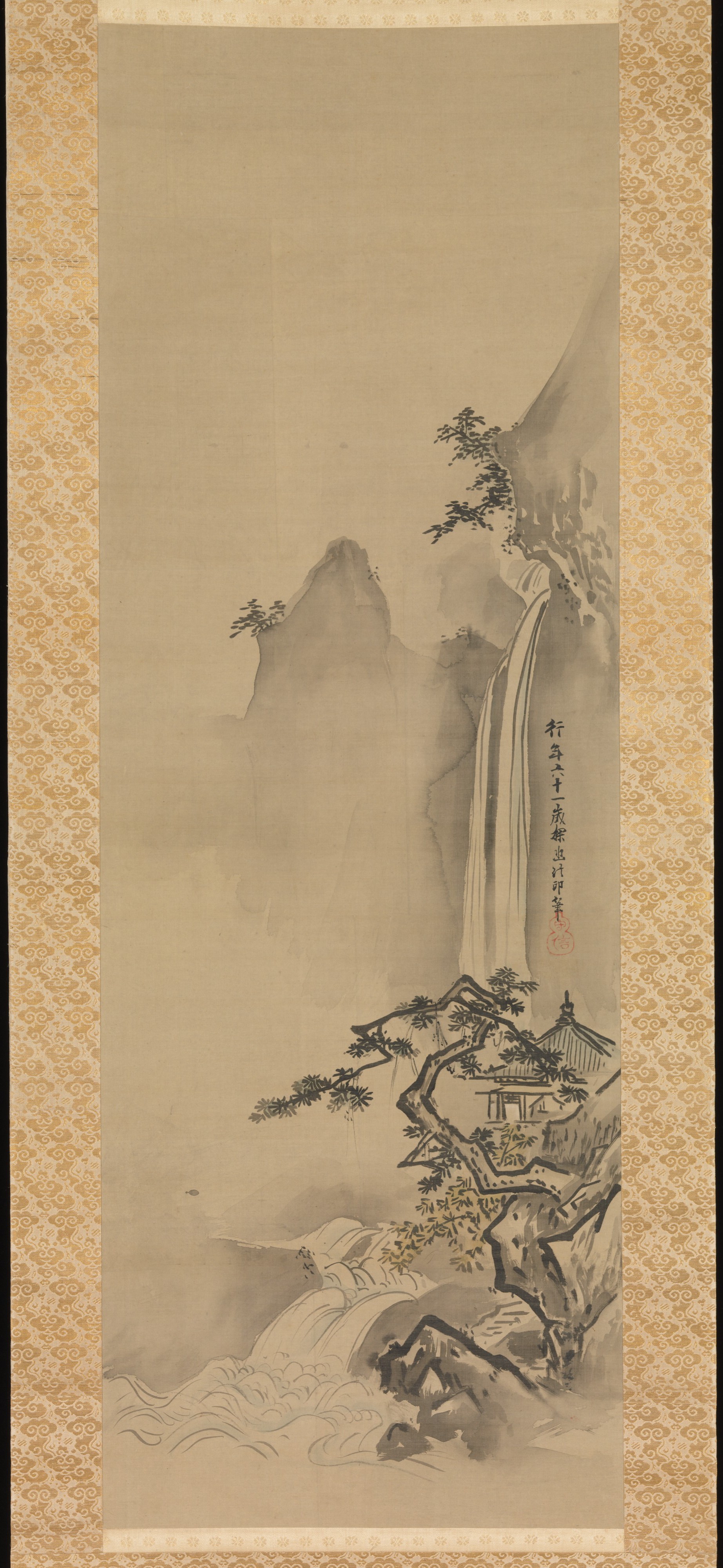Summer Landscape
Kano Tan'yū Japanese
Not on view
Seasonal landscapes in a Chinese style evoking summer and winter flank an imaginary portrait of Shennong (Japanese: Shinnō), the legendary Chinese emperor and reputed inventor of agriculture and herbal medicine. The landscapes, markedly asymmetrical in keeping with the Chinese Southern Song (1127–1279) conventions, also follow the popular Japanese late medieval formula for landscapes: the summer scene features a tall waterfall with a gushing stream, while its companion is enveloped in the silence of winter snow, a solitary traveler and a single pennant denoting a wine shop as the sole signs of human presence.
The pair of landscapes (14.76.26, .28) were signed and dated by Tan’yū to his sixty-first year (1662), while the Shennong portrait (14.76.27), according to the signature, was brushed three years later, when the artist was sixty-four. Following the custom of having landscapes flank religious paintings to create a triptych, this set was brought together by a former owner.
.
Due to rights restrictions, this image cannot be enlarged, viewed at full screen, or downloaded.
This artwork is meant to be viewed from right to left. Scroll left to view more.




